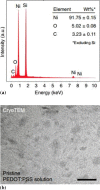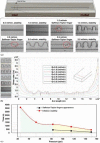3D-Printed Objects for Multipurpose Applications
- PMID: 33814874
- PMCID: PMC7996717
- DOI: 10.1007/s11665-021-05664-w
3D-Printed Objects for Multipurpose Applications
Abstract
3D printing is a popular nonconventional manufacturing technique used to print 3D objects by using conventional and nonconventional materials. The application and uses of 3D printing are rapidly increasing in each dimension of the engineering and medical sectors. This article overviews the multipurpose applications of 3D printing based on current research. In the beginning, various popular methods including fused deposition method, stereolithography 3D printing method, powder bed fusion method, digital light processing method, and metal transfer dynamic method used in 3D printing are discussed. Popular materials utilized randomly in printing techniques such as hydrogel, ABS, steel, silver, and epoxy are overviewed. Engineering applications under the current development of the printing technique which include electrode, 4D printing technique, twisting object, photosensitive polymer, and engines are focused. Printing of medical equipment including artificial tissues, scaffolds, bioprinted model, prostheses, surgical instruments, COVID-19, skull, and heart is of major focus. Characterization techniques of the printed 3D products are mentioned. In addition, potential challenges and future prospects are evaluated based on the current scenario. This review article will work as a masterpiece for the researchers interested to work in this field.
Keywords: 3D printed; challenges; characterization; medical applications; printing applications; simulation.
© ASM International 2021.
Figures






References
-
- The third industrial revolution, The Economist, http://www.economist.com/node/21553017 (2012)
-
- Yan X, Gu P. A Review of Rapid Prototyping Technologies and Systems. Comput. Des. 1996;28:307–318.
-
- Sood AK, Ohdar RK, Mahapatra SS. Parametric Appraisal of Mechanical Property of Fused Deposition Modeling Processed Parts. Mater. Des. 2010;31:287–295. doi: 10.1016/j.matdes.2009.06.016. - DOI
-
- Frazier WE. Metal Additive Manufacturing: A Review. J. Mater. Eng. Perform. 2014;23:1917–1928. doi: 10.1007/s11665-014-0958-z. - DOI
-
- Simchi A, Petzoldt F, Pohl H. On the Development of Direct Metal Laser Sintering for Rapid Tooling. J. Mater. Process. Technol. 2003;141:319–328. doi: 10.1016/S0924-0136(03)00283-8. - DOI
Publication types
LinkOut - more resources
Full Text Sources
Other Literature Sources
